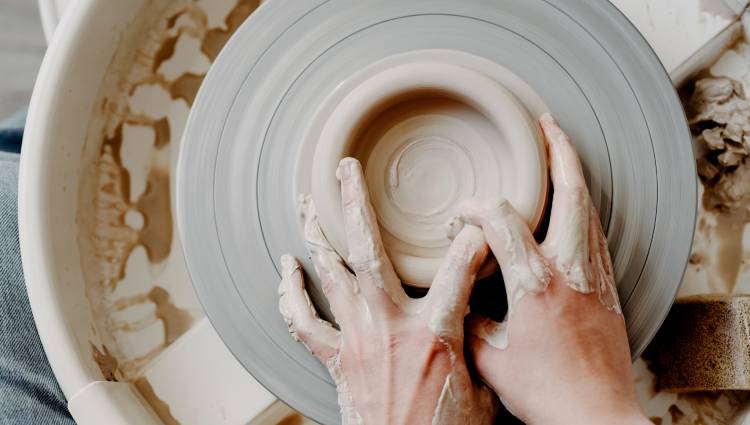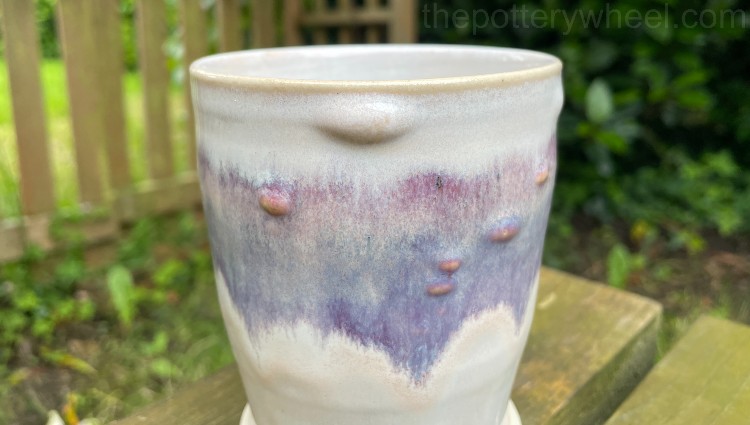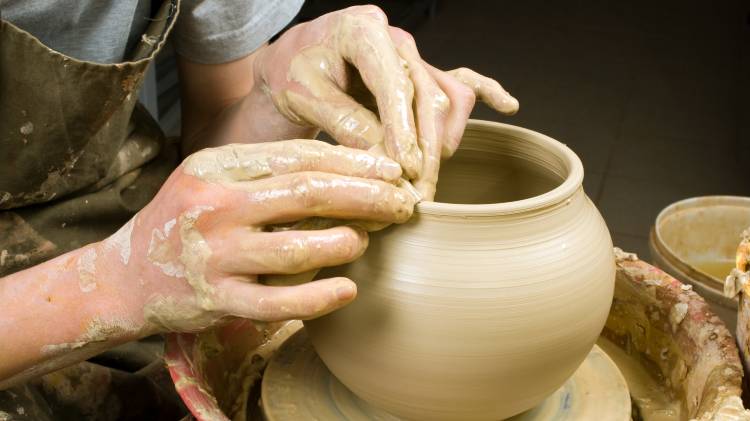If you are new to using a pottery wheel, you may notice that many of them have a switch that changes the direction that the wheel turns. But which direction should a pottery wheel turn, and does it make a difference?
It’s often recommended that right-handed potters have the wheel turning counterclockwise and that left-handed potters set the wheel clockwise. However, lots of left-handed potters throw on wheels turning anti-clockwise. Also, different countries have different traditions around the direction a pottery wheel turns.
Which Direction Should a Pottery Wheel Spin?
One of the factors that affect the direction of your wheel is whether you are left or right-handed. Let’s take a look at how your dominant hand can affect the way you use a pottery wheel.
Being Left or Right-Handed When Pottery Throwing
It’s often said that it’s easier for right-handed people to throw with the wheel going counter-clockwise. Counter-clockwise means the same as anti-clockwise. By contrast, some left-handed people prefer the wheel to turn clockwise. But why should that be? Here are some reasons…
1) Your Hands Have Different Skills
Often your dominant hand will be better at fine motor skills. These are the fiddly detail activities that require a lot of dexterity.
By contrast, the non-dominant hand is better for activities that involve gross motor skills. These skills use larger muscles and are more about stabilization.
If you are right-handed, it will be easier for you to use your left hand to put pressure on the clay. This is particularly useful when you are centering the clay.
When you are centering, the left hand is used as a bit of a stabilizer. The clay turns round to the left and meets the strong stabilizing heel of your left hand.
It continues to turn and meets the soft palm of your right hand. Your right hand is then agile enough to control the shape of the clay. It takes a leading role in activities like coning the clay up and down.
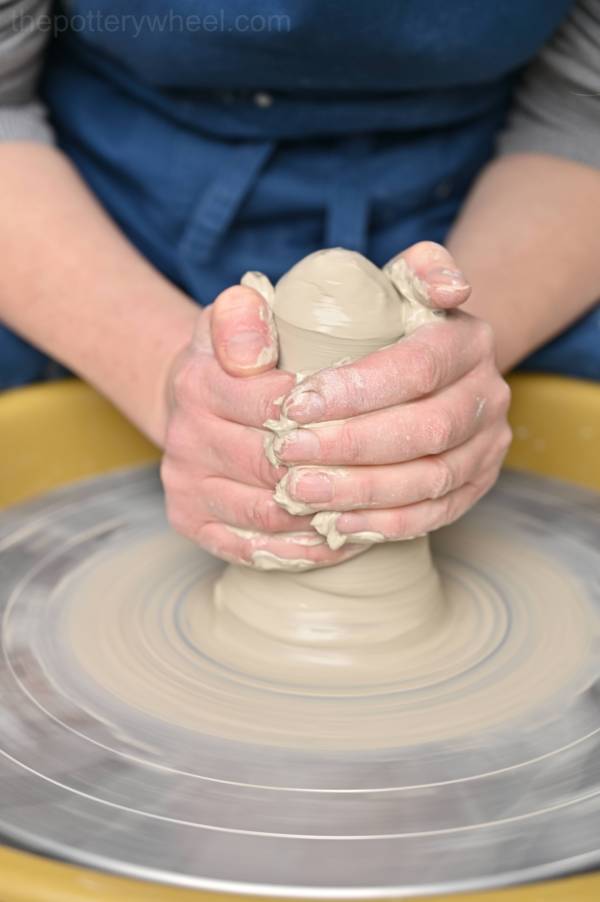
The opposite is true if you are left-handed. It can be helpful if the wheel is rotating clockwise. This is because the clay is turning and meeting your right hand, which acts as a stabilizer and puts pressure on the clay.
This isn’t always the case though, and I do know left-handed potters who throw with the wheel turning counterclockwise.
2) Accidentally Damaging Your Pots
If the clay is spinning towards your fingers, there is a higher chance that your fingers will dig into the clay and gouge it. The clay should be moving away from your fingers as you are applying pressure or shaping it.
If the fingers of your right hand are more involved in shaping the clay, then it’s better if the clay is moving away from your right hand rather than toward it.
The same is true when you are using tools when throwing, or when you are trimming your pots.
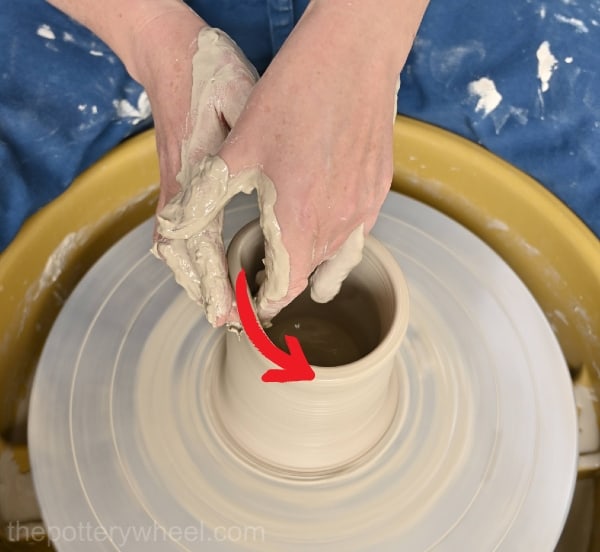
Regional Differences In the Direction a Pottery Wheel Turns
Different countries and regions have different traditions when it comes to the direction a pottery wheel turns.
In the West, pottery wheels are more likely to turn counter-clockwise. Some pottery wheels don’t have a reverse function. And if they don’t turn in both directions, they are more likely to rotate left. By contrast, pottery wheels in Japan, China, and Korea tend to go clockwise.
Regardless of whether you are left or right-handed, pottery students are often taught to throw with the wheel turning in the direction that is considered normal for that region.
Why Do Pottery Wheels Turn in Different Directions?
The reason that pottery wheels turn left in the west, and right in the east is mainly historical.
Pottery Wheels in the West
Up to 95% of people are right-handed (source). In the west, potter’s wheels were originally built with a wheel head that sat above a flywheel. The flywheel was kicked in the same way that a kick wheel is used today.
Because most people are right-handed, typically potters kick the flywheel with their right foot. When a flywheel is kicked with your right foot, it will turn the wheel head counterclockwise.
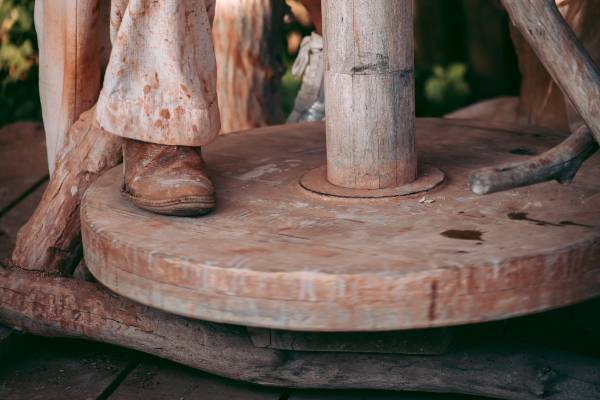
Pottery Wheels in the East
By contrast, wheels in the East were designed and evolved differently. The wheel head was positioned close to the ground. Rather than being separate mechanisms, the wheel head and flywheel were the same thing.
The potter sits on the ground next to the wheel with crossed legs. The wheel head is rotated by inserting a stick into a hole in the wheel head and pulling the stick. The potter then throws the clay. As the wheel slows down, the stick is used again to speed it up. The process is repeated for as long as it is needed.
It is easier to get the wheel’s momentum going if you pull the stick rather than push it. If you are right-handed, then you will pull the wheel head towards you in a clockwise direction. The stick and the wheel head, therefore, move clockwise.
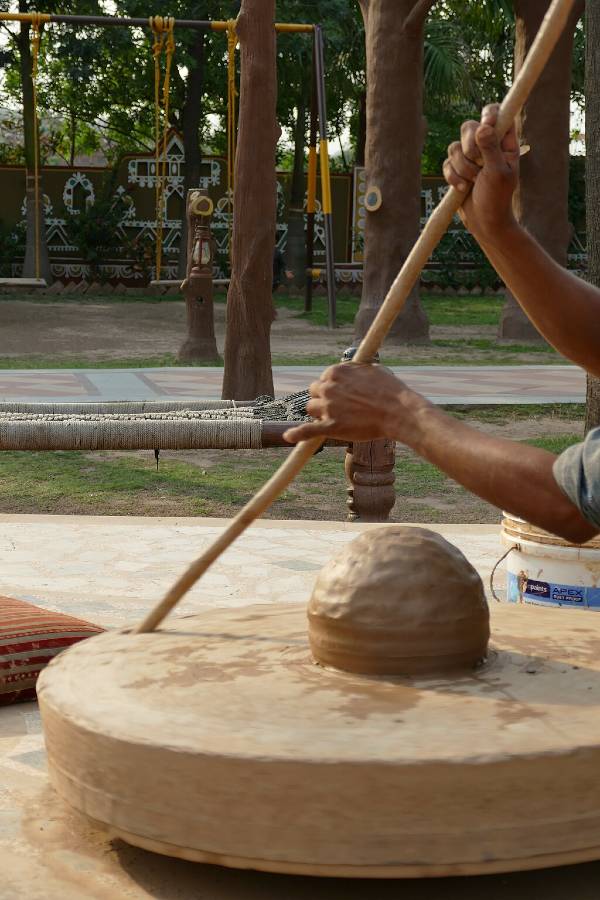
Kritzolina, CC BY-SA 4.0, via Wikimedia Commons
Other Cultural Differences
In the East, potters tend to use their left hand more on the outside of the pot than Western potters. One suggested reason is that the inside of the pot is considered more important than the outside by Eastern potters.
Therefore, the dominant hand is used to do fine work on the inside. While the left hand does more work stabilizing the piece on the outside.
I have also read that traditionally the left hand was thought to be closer to the heart. Some argue this is why in the East, the left hand spends more time on the outside of the pot. Because it keeps it closer to the heart.
I like the sentiment behind this thought, but I’m not sure how much truth there is in it.
Final Thoughts
Strictly speaking, there is no right or wrong direction for your pottery wheel to turn. Different countries have different conventions when it comes to what direction pottery wheels turn. And you may find one direction more comfortable than another depending on your dominant hand.
There is an argument for learning to throw in the way that most potters throw where you are located. Learning using the direction of the wheel that your pottery teacher uses may make it easier to copy what they are doing.
But equally, throwing there is a good argument for doing whatever feels most natural to you. Throwing is a complicated mix of motor skills and creativity. If you start off battling your instincts you are making the job of learning harder.
To quote a pottery teacher of mine, it doesn’t matter if you throw clockwise or counterclockwise. The quality of the pottery produced is the same. However, it will take much longer to learn if you go against what feels natural.

